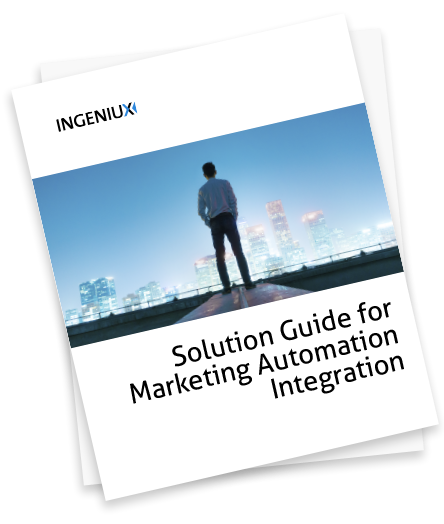How Ingeniux Support Integration with Marketing Automation Solutions
Ingeniux provides a best of breed web content management platform that enables you to create, manage and publish content to a wide array of channels and devices. It comes with built-in integrations with key marketing automation solutions such as Marketo, HubSpot, Eloqua, Salesforce Pardot, and others.
The Ingeniux CMS focuses on enabling you to create and manage intelligent, reusable content for true mobile and multi-channel delivery. Your marketing automation system focuses on capturing and tracking prospects and leads. It manages the various campaigns you set up and provides an environment where you can monitor and move leads through the qualification process.
Essentially, marketing automation is the lead and campaign management backend, and the CMS is the experience delivery tier. Together, the two ensure your customer experience is consistent and engaging.
Tracking User Activity
Tracking user activity on the website is the lowest integration you can set up. To track user activity on the website, Ingeniux adds JavaScript to the Ingeniux DSS (Dynamic Site Server) site. Tracking user activity is base-level integration you must have in place to implement the next level of integration.
Landing Page Integration
Landing pages are created to capture visitor information in exchange for viewing or downloading a content asset. Through landing page integration, you can integrate form data between the marketing automation system and Ingeniux CMS. You can do this in one of three ways: create the form in the MA and add to the CMS, create the landing page in the MA and link in the CMS, and create the landing page in the CMS and push data to the MA.
Pre-fill Forms / Progressive Profiling
One way to improve the user’s web experience for landing pages is to prefill all or parts of a landing page form for a visitor who has already submitted the current form or another form for a different content asset. In this instance, the prefilled data is pulled from the marketing automation system using either server-side or client size script. This integration approach leverages cookies and uses either a JavaScript or server-side API from the marketing automation system.
Campaign Integration
Marketing campaigns often involve driving prospects to specific website pages and content. To track when a prospect visits a page linked in a campaign, Ingeniux tags content with Campaign IDs from the marketing automation system and then sends tracking data for that visitor back to the campaign in the marketing automation system. This integration approach uses either a JavaScript or server-side API from the marketing automation system.
Personalizing the Web Experience
Some marketing campaigns start with tracking visitors on the website. If a visitor views certain web content they are added to a campaign in the marketing automation system and potentially a visitor segment. As the visitor uses the website the CMS shows specific content targeted by the marketing automation campaign.






